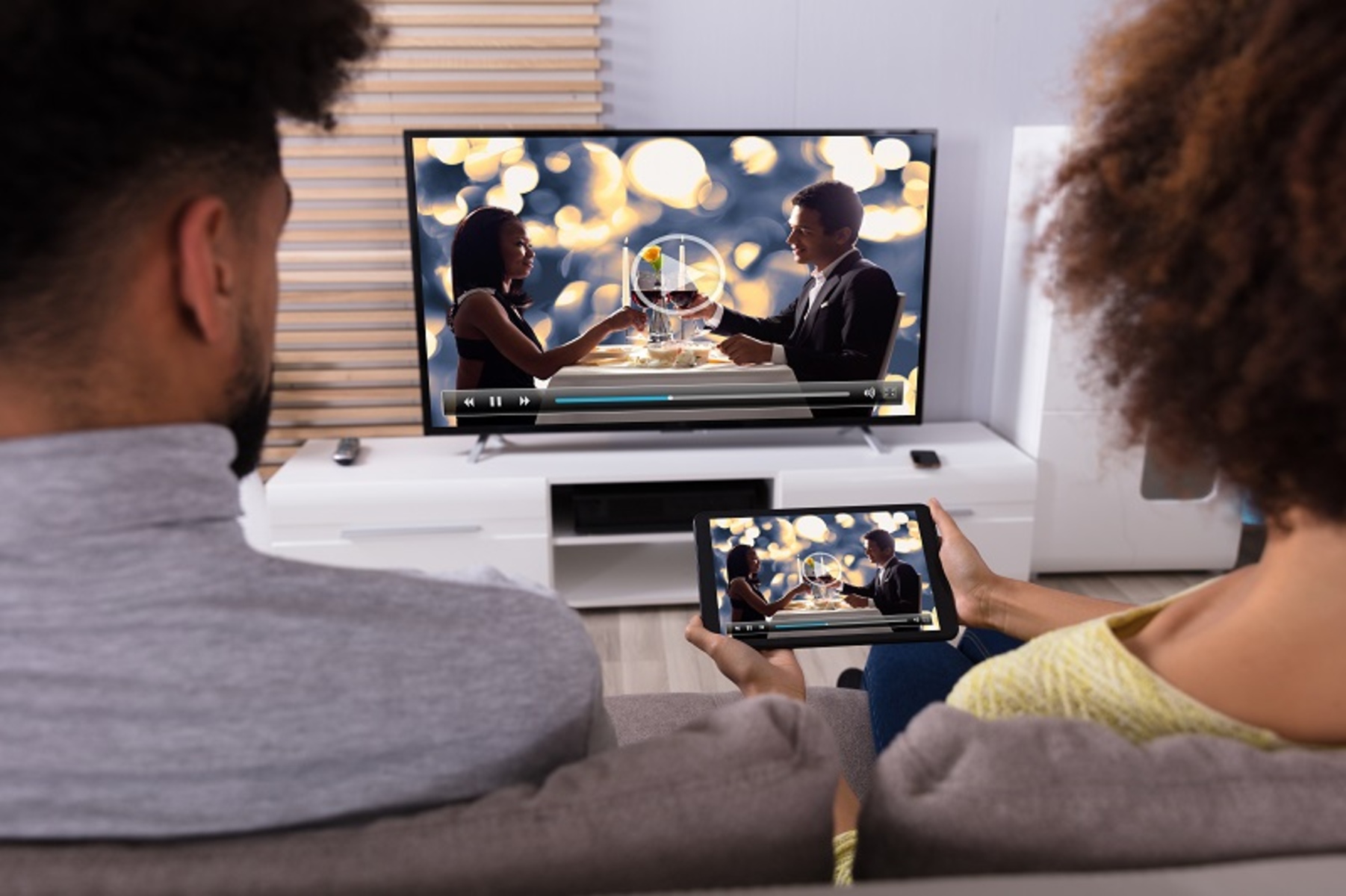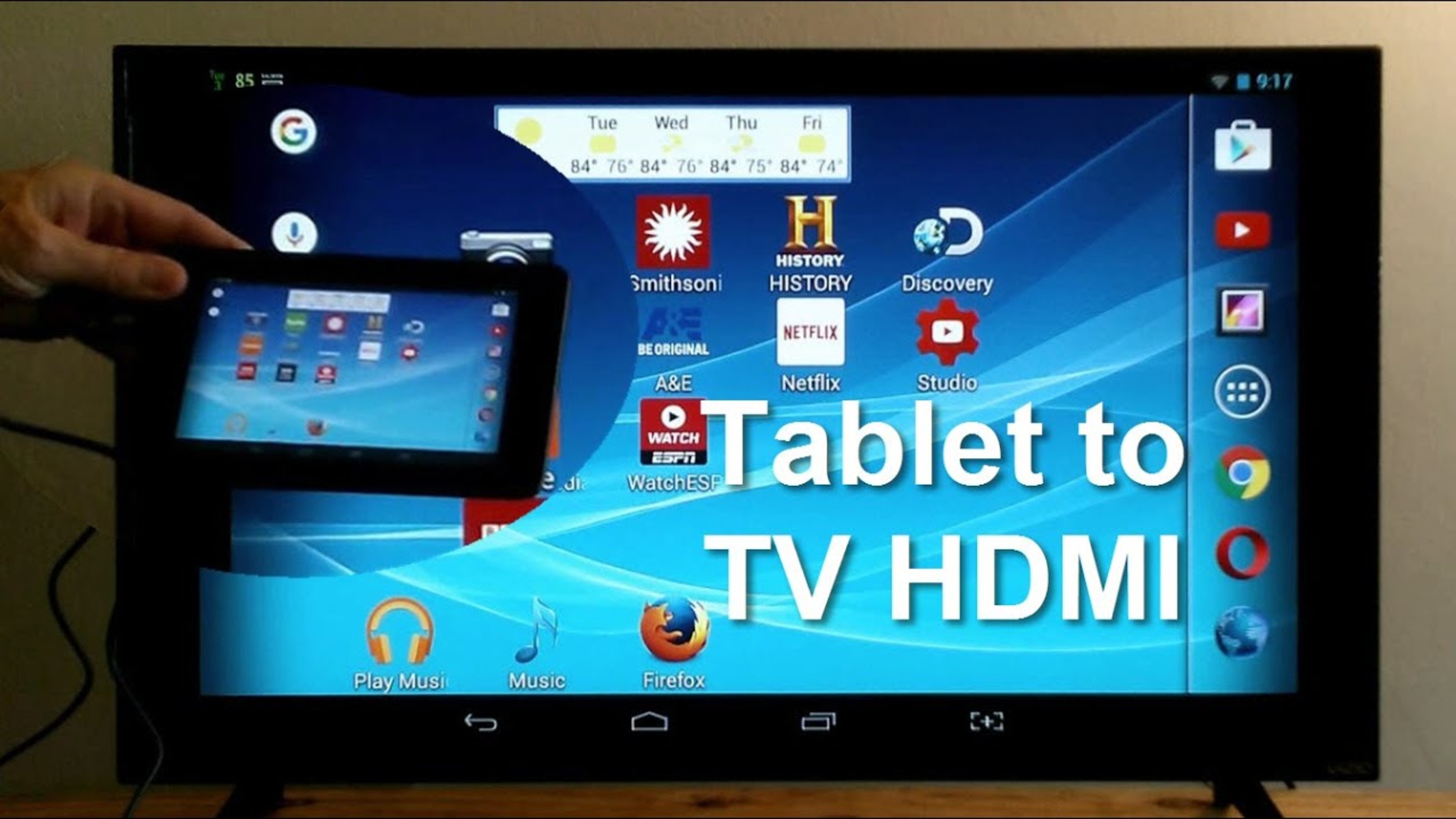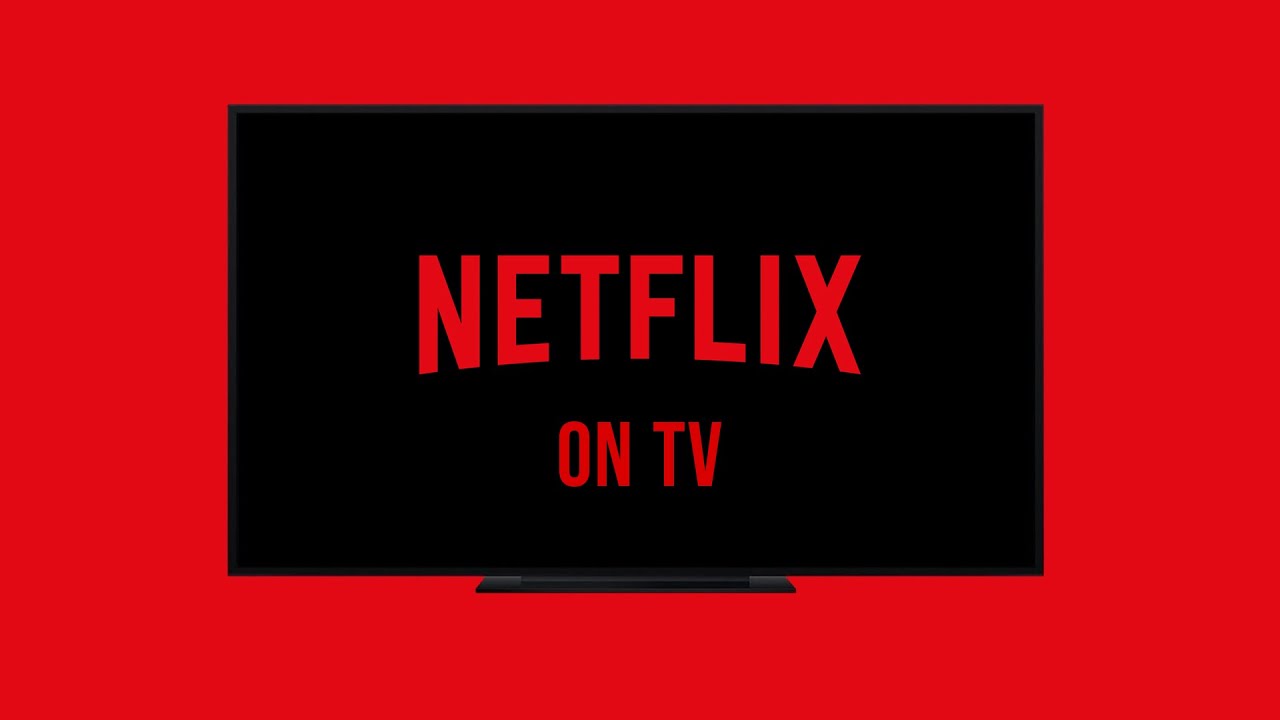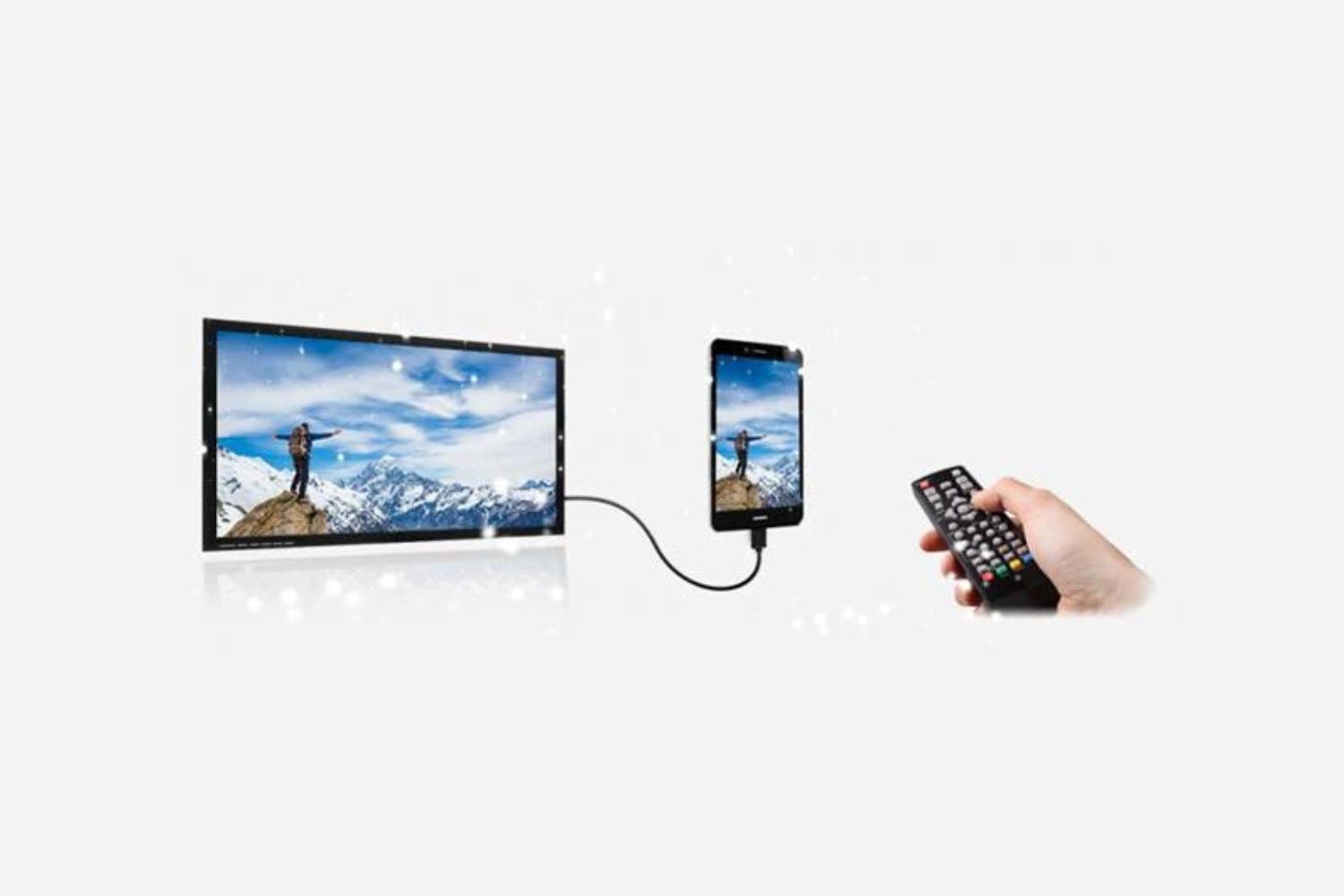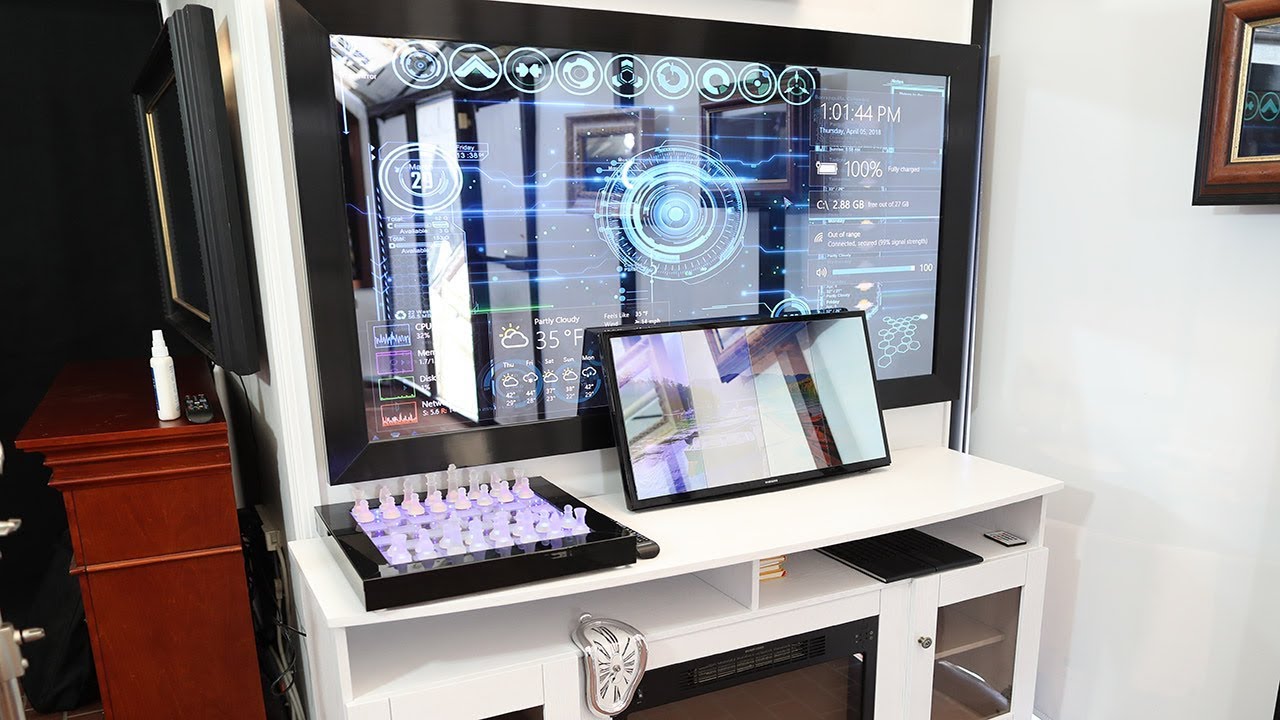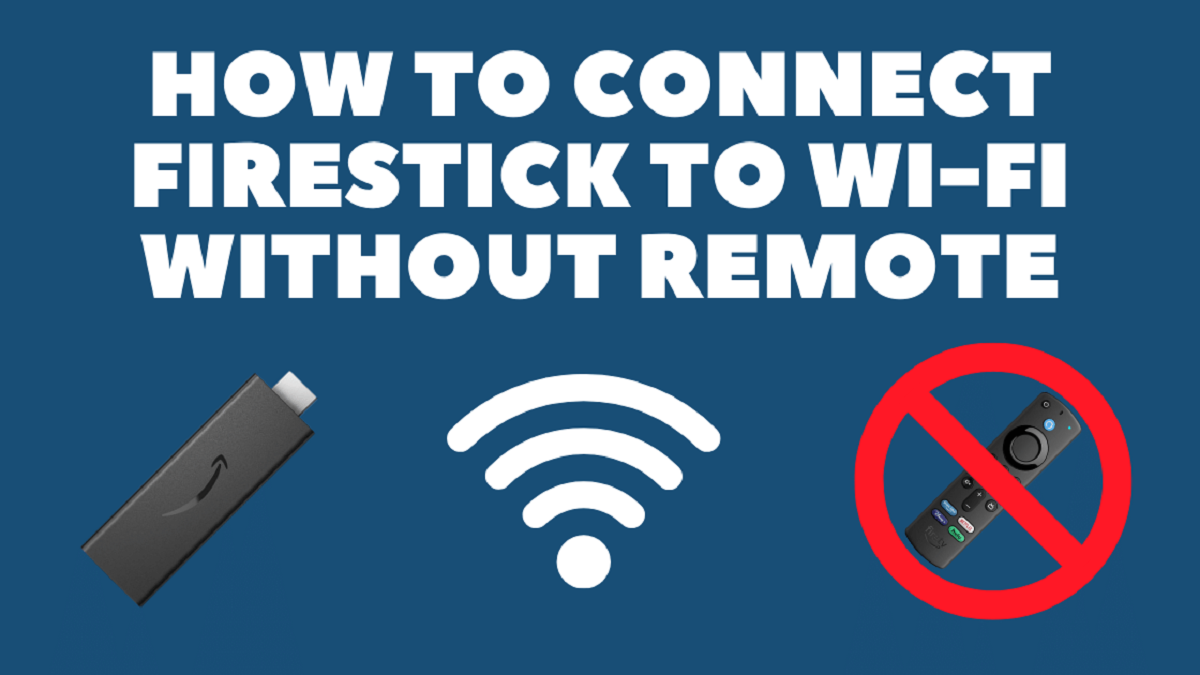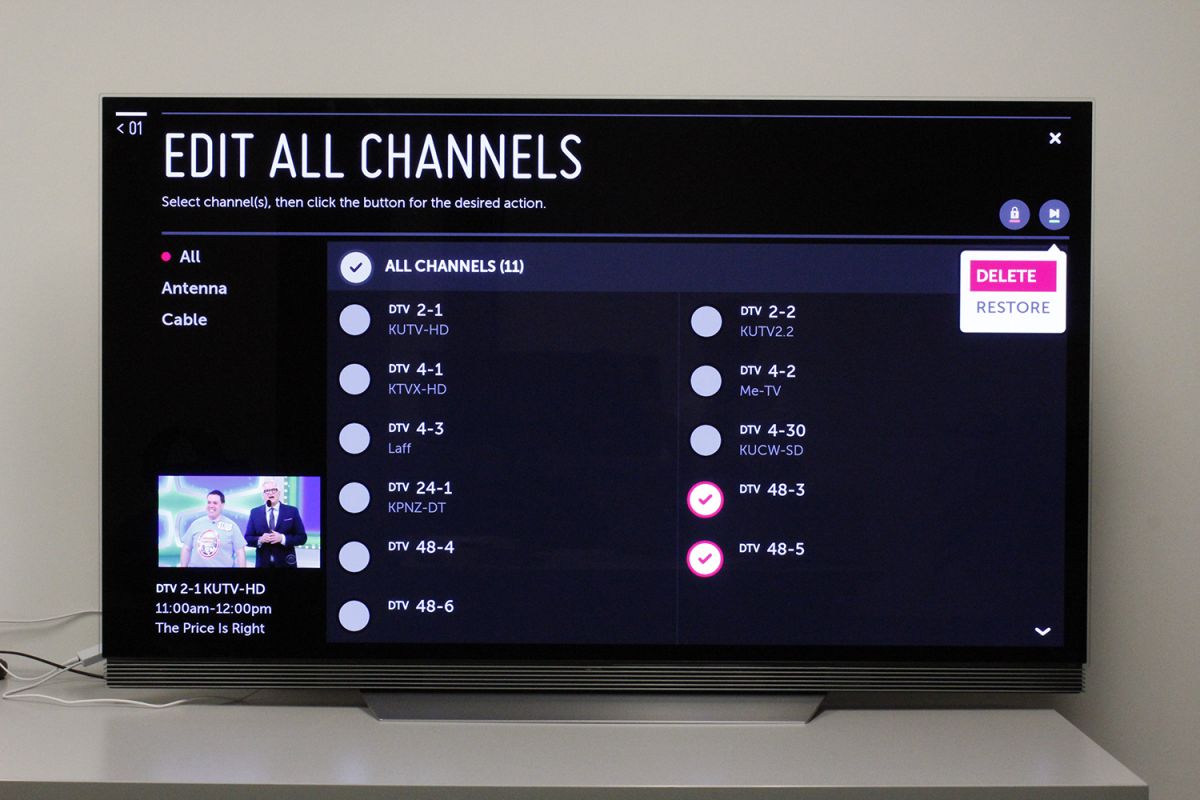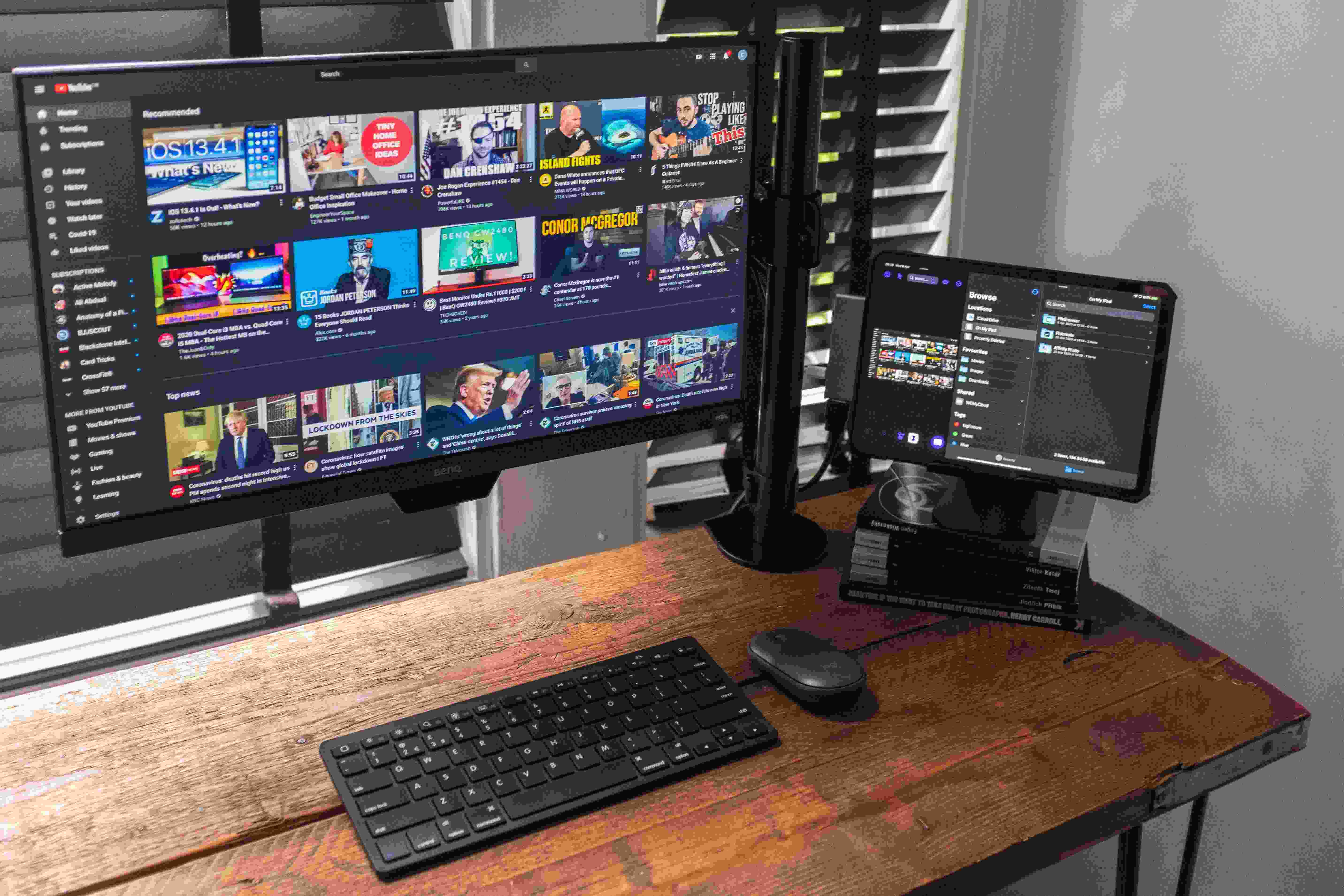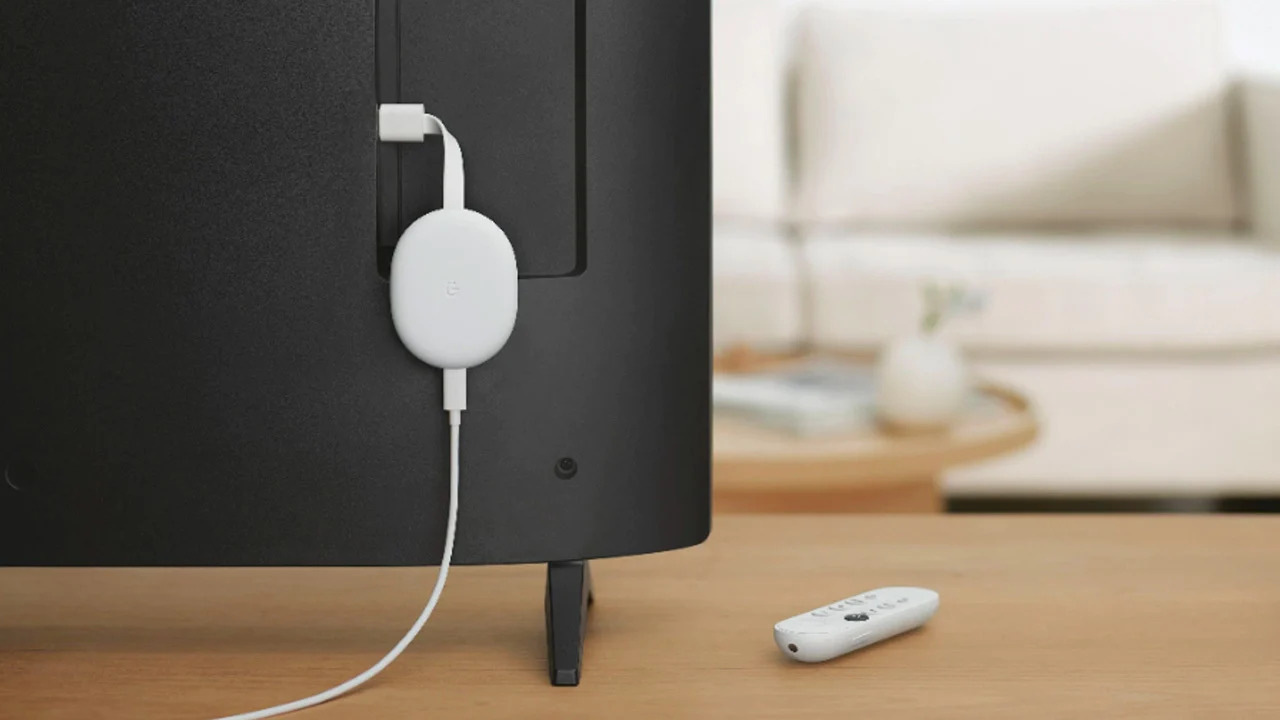Introduction
Connecting your tablet to a TV can open up a world of possibilities, allowing you to enjoy your favorite movies, TV shows, photos, and videos on a bigger screen. While most modern TVs come equipped with HDMI ports, not all tablets have this feature. If your tablet lacks an HDMI port, don’t worry; there are several alternative methods to connect your tablet to a TV and enjoy multimedia content.
In this article, we will explore five different methods to connect your tablet to a TV without an HDMI port. These methods include:
- Using MHL (Mobile High-Definition Link)
- Using SlimPort
- Using Chromecast
- Using Miracast
- Using Apple TV
By following these methods, you can stream content from your tablet to your TV and enjoy a more immersive viewing experience. Whether you want to watch movies, play games, or share photos and videos with friends and family, these solutions will ensure that you can do so without the need for an HDMI port.
Each method has its own unique advantages and suitability depending on your specific tablet model and TV compatibility. By exploring these options, you can find the one that works best for you and successfully connect your tablet to the TV.
So, if you’ve been wondering how to connect your tablet to a TV without an HDMI port, keep reading. In the following sections, we will discuss each method in detail, providing step-by-step instructions on how to set up and use these connection methods.
Method 1: Using MHL (Mobile High-Definition Link)
If your tablet supports MHL (Mobile High-Definition Link), you can easily connect it to your TV using an MHL adapter or cable. MHL allows you to transmit audio and video signals from your tablet’s micro USB port to the HDMI port on your TV.
Here’s how you can connect your tablet to your TV using MHL:
- Check if your tablet is MHL-compatible: Not all tablets support MHL, so it’s important to confirm if your device has this feature. You can check your tablet’s specifications or do a quick online search to determine if it supports MHL.
- Purchase an MHL adapter or cable: Once you confirm that your tablet supports MHL, you will need to purchase an MHL adapter or cable. These can be found at electronics stores or online retailers.
- Connect the adapter or cable to your tablet: Plug one end of the MHL adapter or cable into your tablet’s micro USB port. Ensure a secure connection.
- Connect the other end to your TV: Plug the other end of the MHL adapter or cable into an available HDMI port on your TV.
- Switch the TV input: Use your TV remote to switch the input source to the HDMI port you connected the MHL cable to. This will display your tablet’s screen on the TV.
- Enjoy your tablet’s content on the TV: Once the connection is established, you can navigate your tablet as usual, and the content will be mirrored on the TV screen. You can watch movies, play games, or browse the internet.
MHL is an excellent option for connecting your tablet to a TV without an HDMI port. However, be sure to check if your tablet supports MHL and purchase the necessary adapter or cable. Keep in mind that MHL can require external power, so make sure to connect the MHL adapter to a power source if needed. Additionally, some MHL-enabled tablets may require specific settings or configurations to enable the connection.
Now that you know how to connect your tablet to a TV using MHL, you can enjoy a larger screen and enhanced multimedia experience. Whether you’re watching videos, playing games, or sharing photos, MHL enables seamless connectivity between your tablet and TV.
Method 2: Using SlimPort
If your tablet supports SlimPort technology, you can easily connect it to your TV using a SlimPort adapter. SlimPort is a versatile connectivity standard that allows you to transmit audio and video signals from your tablet’s micro USB or USB-C port to the HDMI port on your TV.
To connect your tablet to your TV using SlimPort, follow these steps:
- Check if your tablet is SlimPort-compatible: Not all tablets support SlimPort, so it’s important to verify if your device has this feature. You can refer to your tablet’s specifications or consult the manufacturer’s website for compatibility information.
- Purchase a SlimPort adapter: Once you confirm that your tablet supports SlimPort, you’ll need to get a compatible SlimPort adapter. These adapters can be found online or at electronics stores.
- Connect the adapter to your tablet: Plug the SlimPort adapter into your tablet’s micro USB or USB-C port, ensuring a secure connection.
- Connect the adapter to your TV: Use an HDMI cable to connect the adapter’s HDMI port to an available HDMI port on your TV.
- Switch the TV input: Use your TV remote to switch to the input source corresponding to the HDMI port you connected the SlimPort adapter to.
- Enjoy your tablet’s content on the TV: With the connection established, your tablet’s screen will be mirrored on the TV, allowing you to watch movies, play games, or view photos on a larger display.
Using SlimPort provides a reliable and convenient way to connect your tablet to a TV without an HDMI port. However, it’s essential to ensure that your tablet supports SlimPort and that you have the correct adapter for your tablet’s specific port type. SlimPort adapters may also require external power, so be sure to connect them to a power source if necessary.
By utilizing the SlimPort technology and following these steps, you can effortlessly connect your tablet to your TV and enjoy your favorite content on a bigger screen. Stream videos, showcase presentations, or display slideshows with ease using SlimPort connectivity.
Method 3: Using Chromecast
Chromecast is a popular streaming device developed by Google that can be used to connect your tablet to a TV without an HDMI port. It allows you to wirelessly stream content from your tablet to your TV using your home Wi-Fi network.
To connect your tablet to your TV using Chromecast, follow these steps:
- Set up Chromecast: Plug the Chromecast device into an available HDMI port on your TV. Connect the USB power cable into the Chromecast device and a power source.
- Install the Chromecast app: Download and install the Google Home app on your tablet. Follow the app’s instructions to set up and configure your Chromecast device.
- Connect your tablet and Chromecast: Make sure that your tablet and Chromecast are connected to the same Wi-Fi network. Open the app and tap on the Cast icon, which resembles a TV screen with Wi-Fi signals. Select your Chromecast device from the list of available devices.
- Mirror your tablet’s screen: Once connected, you can choose to mirror your tablet’s screen to your TV. This will display everything that appears on your tablet’s screen on the TV.
- Stream content from supported apps: Many popular apps, such as Netflix, YouTube, and Hulu, support Chromecast. Simply open the app and look for the Cast icon, then select your Chromecast device to start streaming content directly to your TV.
Using Chromecast offers a convenient and user-friendly way to connect your tablet to a TV without an HDMI port. With wireless streaming capabilities, you can enjoy a seamless viewing experience and easily navigate through your favorite apps and content.
Do note that the availability of certain features and functionalities may vary depending on your tablet’s compatibility and app support. Nevertheless, Chromecast remains an excellent choice for casting content from your tablet to your TV, providing you with endless entertainment options.
Method 4: Using Miracast
If your tablet and TV both support Miracast technology, you can connect them wirelessly without the need for an HDMI port. Miracast allows you to mirror your tablet’s screen onto your TV, similar to how Chromecast works, but without the need for a separate device.
To connect your tablet to your TV using Miracast, follow these steps:
- Check if your tablet and TV are Miracast-compatible: Both your tablet and TV need to support Miracast for this method to work. Check your tablet’s specifications or consult the manufacturer’s website to confirm Miracast support.
- Enable Miracast on your TV: Access your TV’s settings menu and look for the Miracast option. Enable Miracast, which may be labeled “Screen Mirroring” or something similar, depending on your TV model.
- Enable Miracast on your tablet: On your tablet, open the settings menu and look for the Miracast or Screen Mirroring option. Enable it, and your tablet will search for available devices.
- Select your TV: Once your tablet detects your TV, select it from the list of available devices.
- Mirror your tablet’s screen: After connecting, your tablet’s screen will be mirrored on the TV. Any actions or content displayed on your tablet will also appear on the TV’s screen.
Using Miracast provides a wireless and seamless way to connect your tablet to your TV without an HDMI port. It eliminates the need for additional cables or adapters and allows you to enjoy your tablet’s content on a larger display.
Keep in mind that the availability and functionality of Miracast may vary depending on your tablet’s operating system and model. Some tablets may refer to the Miracast feature by a different name, such as “Wireless Display” or “Smart View.”
By following these steps, you can easily set up Miracast and enjoy the convenience of mirroring your tablet’s screen on your TV. Whether you want to stream movies, play games, or share photos, Miracast offers a versatile and wireless solution for connecting your tablet to your TV.
Method 5: Using Apple TV
If you own an iPad or iPhone and want to connect it to your TV without an HDMI port, using Apple TV is an excellent option. Apple TV is a media streaming device that allows you to wirelessly connect your Apple device to your TV and enjoy a wide range of multimedia content.
To connect your Apple device to your TV using Apple TV, follow these steps:
- Set up Apple TV: Connect the Apple TV device to an available HDMI port on your TV. Power on the Apple TV and follow the on-screen instructions to complete the setup process.
- Connect your Apple device and Apple TV: Make sure that both your Apple device and Apple TV are connected to the same Wi-Fi network. On your Apple device, swipe up from the bottom or down from the top (depending on the model) to access the Control Center. Tap on the AirPlay icon and select your Apple TV from the list of available devices.
- Mirror your device’s screen or stream content: Once connected, you can choose to mirror your device’s screen on the TV or use compatible apps to stream content directly to the TV. To mirror the screen, enable “Screen Mirroring” or “AirPlay Mirroring” on your device’s Control Center. To stream content, open a compatible app (such as Netflix or YouTube), and look for the AirPlay icon to stream it to your TV.
Using Apple TV provides a seamless and feature-rich method to connect your iPad or iPhone to your TV wirelessly. With AirPlay Mirroring, you can enjoy the convenience of mirroring your device’s screen on the larger TV display, making it perfect for presentations, gaming, or media playback.
It’s worth noting that Apple TV is specifically designed for Apple devices and may not be compatible with non-Apple tablets or smartphones.
By following these easy steps, you can connect your Apple device to your TV without an HDMI port using Apple TV. Enjoy the versatility of streaming content, mirroring your screen, and accessing various apps and features on the big screen.
Conclusion
Connecting your tablet to your TV without an HDMI port is easier than you might think. By utilizing methods such as MHL, SlimPort, Chromecast, Miracast, or Apple TV, you can enjoy a larger and more immersive viewing experience on your TV screen.
In this article, we explored five different methods to connect your tablet to a TV without an HDMI port. Each method offers its own advantages, such as wired connections through MHL and SlimPort, or wireless options using Chromecast, Miracast, or Apple TV.
Before attempting to connect your tablet, be sure to check if your device is compatible with the chosen method. Ensure that you have the necessary adapters, cables, or devices required for the specific method you plan to use. Consult your tablet’s manual or the manufacturer’s website for more detailed instructions on how to connect your tablet to a TV.
Whether you want to watch movies, play games, share photos, or even give presentations, these methods provide you with the flexibility and convenience to enjoy your tablet’s content on a larger screen. By following the step-by-step instructions provided for each method, you can successfully connect your tablet to your TV without an HDMI port.
Remember, the availability and functionality of these methods may vary depending on your specific tablet model and TV compatibility. It’s always recommended to explore options that work best for your devices and preferences.
Now that you have learned these alternative methods for connecting your tablet to a TV without an HDMI port, you can enhance your multimedia experience by sharing your tablet’s content with family and friends on a larger screen.
So, get ready to enjoy all your favorite movies, videos, games, and more on the big screen, thanks to these innovative and user-friendly connection methods!







